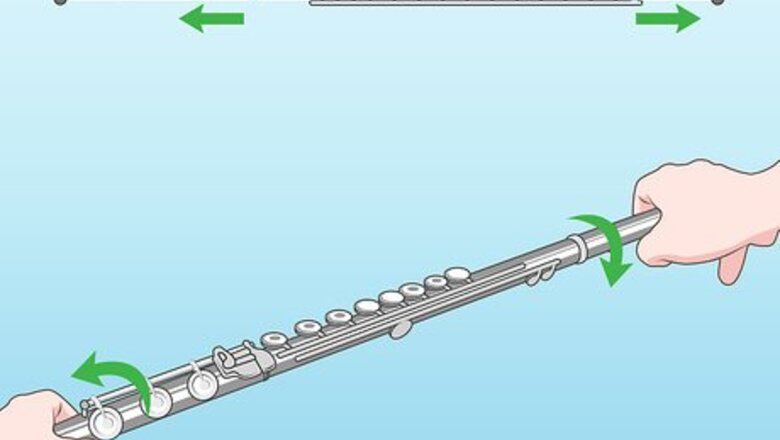
views
Cleaning Your Flute
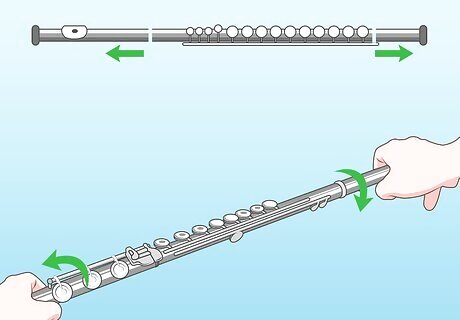
Unscrew the pieces gently. In order to take apart your flute, gently unscrew the head-joint and foot-joint from the body of the flute. This should be done carefully. Be sure not to touch the keys or keypads because these can easily be damaged.
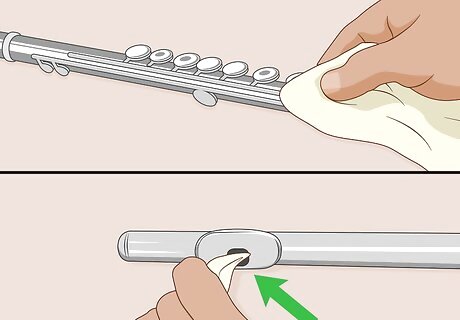
Clean your flute after each use. Before you put away and store your flute, it is important that you remove the moisture from inside. If left uncleaned, your flute will not only begin to smell, but it will also tarnish on the inside. As a result, you should clean the inside and outside of your flute after every use.
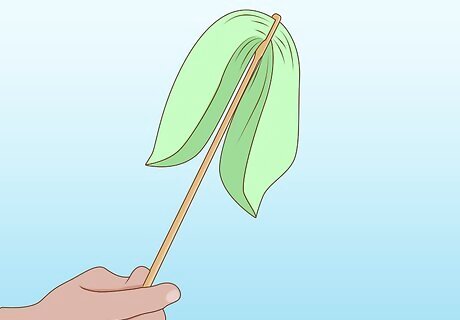
Attach a cloth to the cleaning rod. Thread a soft cloth through the needle-like slot in the end of your cleaning rod. Pull the cloth through the slot so that half of the cloth is on either side of the rod. Use a cloth made from a soft and thin material, such as a microfiber or cotton.
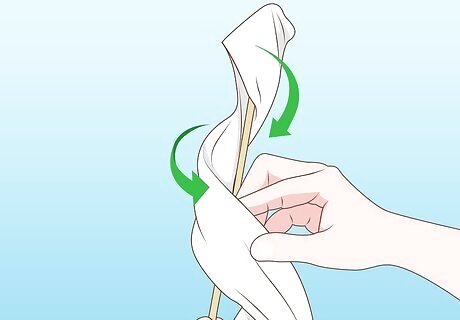
Wrap the cloth around the rod. Take the cloth and wrap it around the rod so that none of the rod is exposed. If the rod touches the flute while cleaning, it can scratch and damage the inside of the flute.
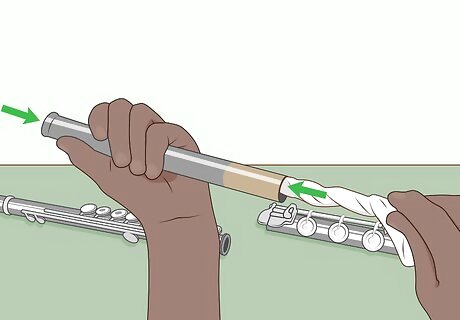
Insert the rod into each section of the flute. Remove the moisture that builds up inside the flute, by gently inserting the cleaning rod into each section of the flute. For example, you will need to clean inside the head-joint, foot-joint, and body of the flute. The cloth will absorb and remove any moisture inside. When cleaning the body section of the flute, be sure to insert the cleaning rod into both ends of the flute. This will ensure that the entire inside is cleaned.
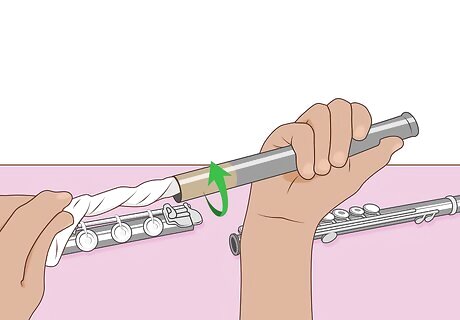
Twist the rod to clean inside. You can gently twist the cleaning rod while it is inside the flute to ensure that all the moisture is absorbed.
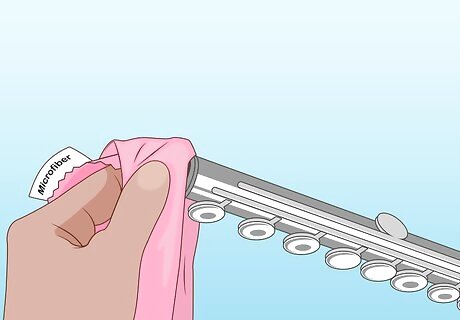
Wipe the outside of the flute with a cloth. Carefully polish the flute with a microfiber cleaning cloth. While playing, grease and fingerprints can build up on the outside of the flute. Gently clean all of the keys and the body of the flute. Pay particular attention to the ends (or tenons) where the separate pieces attach together. This is where gunk can often build up. Use your fingers and a cloth to clean around and inside the ends. Do not use cloths that contain metal polish. These can damage your flute and should be avoided.
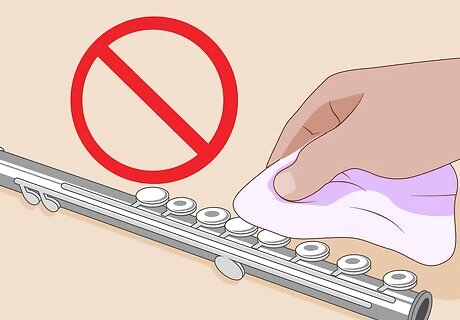
Don’t touch the key pads while cleaning. When you are cleaning, be sure to hold the flute by the barrel and avoid touching the key pads. These can be easily punctured and will cause damage to your flute. You can also bend the keys if you are too rough while cleaning. If the key pads or keys are damaged, take your flute to a professional for servicing and repair.
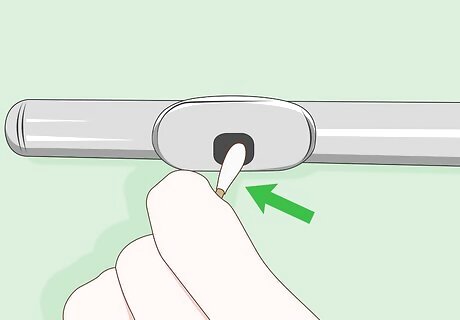
Use a cotton swab to clean tough to reach places. You can use a cotton swab to remove dust and buildup between the keys. A cotton swab can also be used to clean the embouchure hole on the head-joint. Be very gentle and avoid touching the keypads.
Storing Your Flute
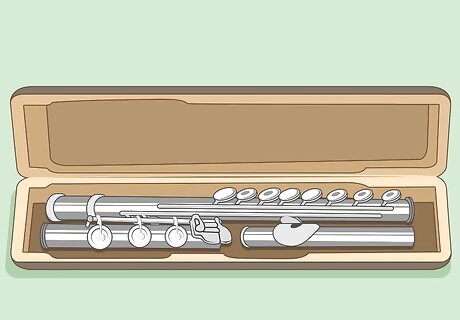
Place the individual pieces into the case. Make sure to always store your flute in the case. If you leave the flute out of the case it is more likely to get damaged. Do not store the wet cleaning cloth inside the case with the flute. This moisture could tarnish the flute. Instead, place the cloth in an outer pouch on the case.
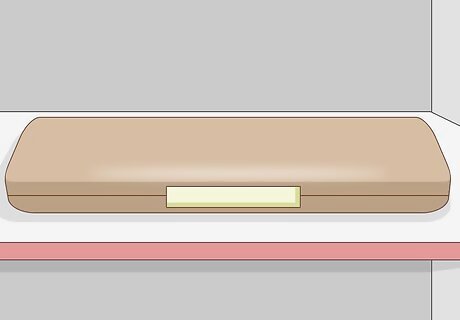
Store in a safe place. Place your flute case in a closet, under your bed, or in a low traffic area of the house. You do not want the case to get knocked over or banged around. This could damage the flute inside.
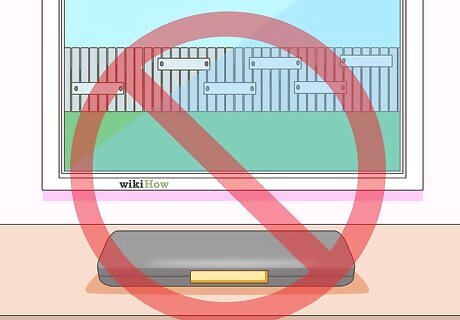
Avoid storing your flute in extreme temperatures. Extreme hot and cold temperatures can affect the mechanics of the flute as well as the pads and the cork inside of the top of the headjoint. Heat can expand it, destroying the top of the headjoint and coldness can shrink the cork, resulting in bad tone and tuning issues. Make sure you store your flute away from radiators or windows with direct sunlight.
Caring for Your Flute
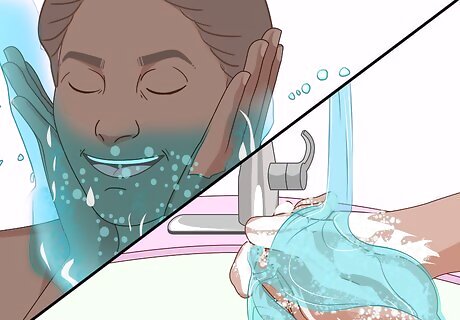
Wash your hands and face before playing. Your hands and mouth may have grease and oils on them that can be transferred to your flute while playing. In order to reduce the amount of grease that comes in contact with your flute, wash your hands and face before playing. This will also reduce the amount of fingerprints that transfer to your flute.
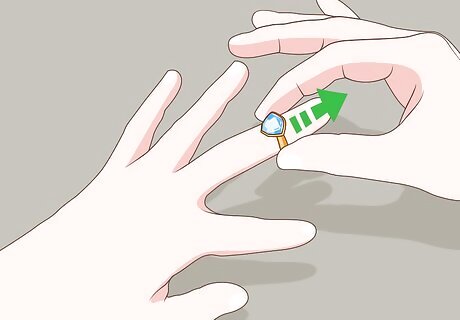
Remove any jewelry prior to playing. Jewelry, especially rings, can scratch or damage the exterior of your flute while you are playing. To reduce this potential damage, remove your rings before you play the flute.
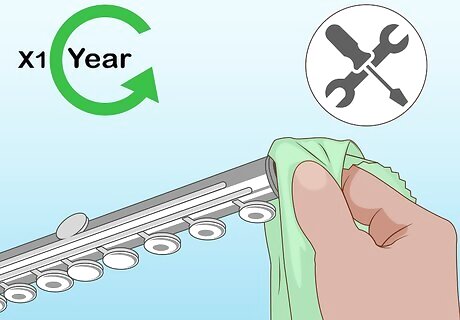
Get your flute serviced at least once a year. A professional will be able to clean and adjust the keypads without causing damage to the instrument. They can also take apart the smaller pieces of the flute for cleaning, tuning, and repair. To properly maintain your instrument, you should have it serviced at least once per year.



















Comments
0 comment